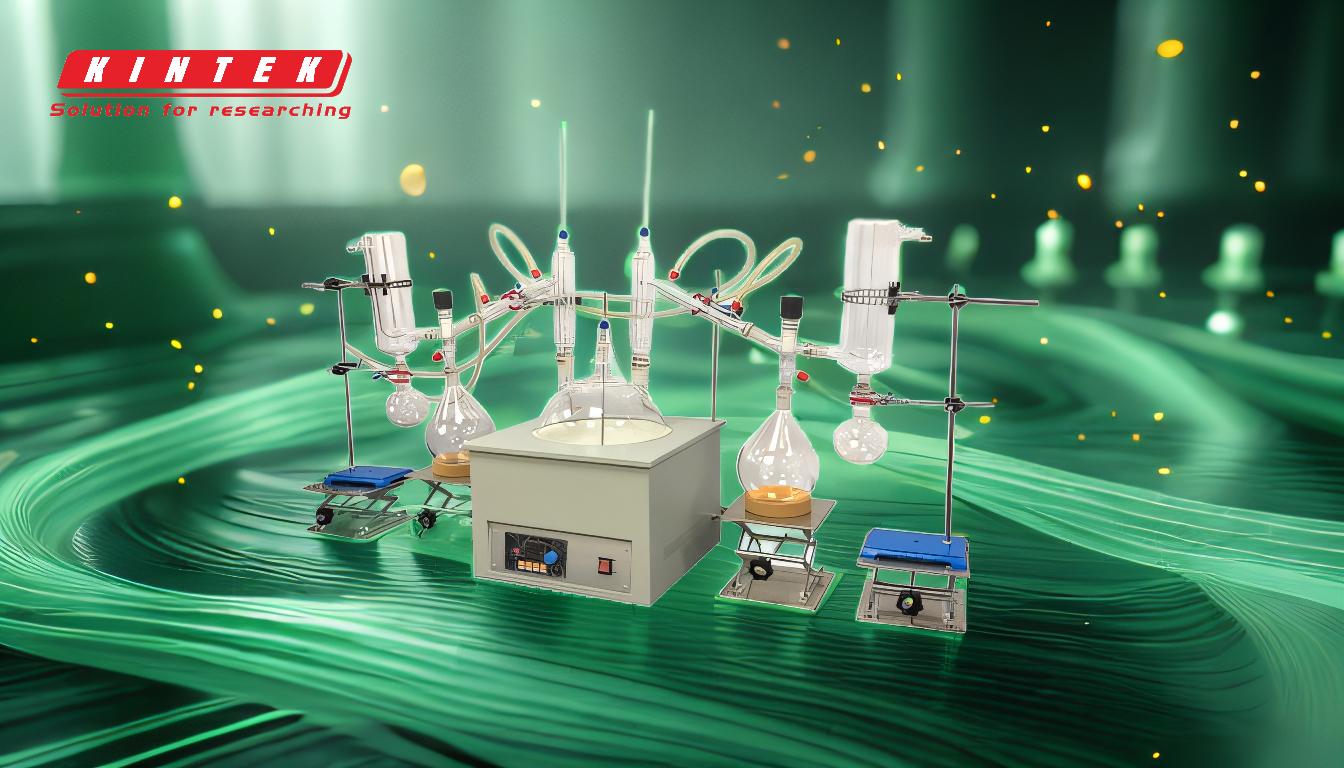When considering distillation, several critical factors must be evaluated to ensure efficient separation, high product quality, and minimal thermal degradation. These factors include the boiling point differences between components, the choice between simple and fractional distillation, the use of vacuum to lower boiling points, and the control of feed rate, temperature, and pressure. Proper management of these variables ensures consistent separation efficiency, prevents damage to sensitive materials, and optimizes the overall distillation process.
Key Points Explained:

-
Boiling Point Differences Between Components:
- The boiling point difference between the components to be separated is a crucial factor in determining the appropriate distillation method.
- Fractional Distillation: Used when the boiling points of the components differ by less than 25 °C (45 °F). This method allows for the separation of components with closer boiling points through the use of a fractionating column.
- Simple Distillation: Suitable for components with boiling point differences greater than 25 °C (45 °F). This method is less complex and does not require a fractionating column.
- Implication: Choosing the correct distillation method based on boiling point differences ensures efficient separation and prevents unnecessary complexity or energy expenditure.
-
Use of Vacuum to Lower Boiling Points:
- Introducing a vacuum can lower the boiling points of materials, which is particularly useful for heat-sensitive compounds.
-
Benefits:
- Reduced Thermal Degradation: Lower boiling temperatures minimize the risk of thermal degradation, preserving the integrity of sensitive materials.
- Increased Evaporation Efficiency: Vacuum conditions enhance evaporation efficiency, allowing for faster distillation.
- Shorter Residence Times: Reduced boiling points lead to shorter residence times, which further protects heat-sensitive compounds from prolonged exposure to high temperatures.
- Implication: Utilizing vacuum distillation is essential for processing materials that are prone to degradation at higher temperatures, such as certain cannabinoids or pharmaceuticals.
-
Control of Feed Rate, Temperature, and Pressure:
- Maintaining consistent control over the feed rate, body temperature, and vacuum level is critical for achieving high separation efficiency and product quality.
- Feed Rate: A steady feed rate ensures a consistent flow of material through the distillation system, preventing fluctuations that could lead to incomplete separation or product contamination.
- Body Temperature: Precise control of the distillation column's body temperature is necessary to maintain the desired separation efficiency. Temperature fluctuations can lead to variations in product purity.
- Vacuum Level: Consistent vacuum levels are crucial for maintaining the desired boiling points and ensuring uniform separation conditions.
- Implication: Proper control of these parameters ensures consistent product quality and efficient operation of the distillation process.
-
Material Input Volume and Purity Requirements:
- The volume of material being processed and the required purity of the final product are important considerations in distillation.
- Material Input Volume: The amount of material being distilled affects the scale of the equipment needed and the overall efficiency of the process. Overloading the system can lead to reduced separation efficiency, while underloading may result in inefficient use of resources.
- Purity Requirements: High-purity products, such as CBD and THC oils, require precise control over temperature, pressure, and feed rate to avoid contamination or degradation of the desired compounds.
- Implication: Understanding the volume and purity requirements helps in selecting the appropriate equipment and process parameters to achieve the desired outcome.
-
Thermal Degradation and Residence Time:
- Thermal degradation is a significant concern in distillation, especially for heat-sensitive materials.
-
Mitigation Strategies:
- Lower Boiling Points: Using vacuum distillation to lower boiling points reduces the risk of thermal degradation.
- Shorter Residence Times: Minimizing the time materials spend at elevated temperatures helps protect them from degradation.
- Implication: Implementing strategies to reduce thermal degradation is essential for maintaining the quality and efficacy of heat-sensitive products.
-
Equipment Selection and Process Optimization:
- The choice of distillation equipment and the optimization of the process parameters are critical for achieving efficient and effective separation.
- Equipment Selection: The type of distillation equipment (e.g., simple vs. fractional distillation systems) should be chosen based on the specific requirements of the materials being processed.
- Process Optimization: Fine-tuning process parameters such as temperature, pressure, and feed rate ensures optimal separation efficiency and product quality.
- Implication: Proper equipment selection and process optimization are key to achieving the desired distillation outcomes while minimizing costs and resource usage.
In summary, when considering distillation, it is essential to evaluate the boiling point differences between components, the use of vacuum to lower boiling points, and the control of feed rate, temperature, and pressure. Additionally, material input volume, purity requirements, thermal degradation, and equipment selection must be carefully managed to ensure efficient and effective distillation. By addressing these factors, one can achieve high-quality separation and maintain the integrity of heat-sensitive materials.
Summary Table:
| Factor | Key Details |
|---|---|
| Boiling Point Differences | - Fractional distillation for <25 °C differences, simple for >25 °C differences |
| Vacuum Use | - Lowers boiling points, reduces thermal degradation, and shortens residence time |
| Feed Rate, Temperature, Pressure | - Ensures consistent separation efficiency and high product quality |
| Material Volume & Purity | - Affects equipment scale and process efficiency; high purity requires precision |
| Thermal Degradation | - Mitigated by vacuum distillation and shorter residence times |
| Equipment Selection | - Choose between simple and fractional distillation systems based on needs |
Optimize your distillation process today—contact our experts for tailored solutions!











